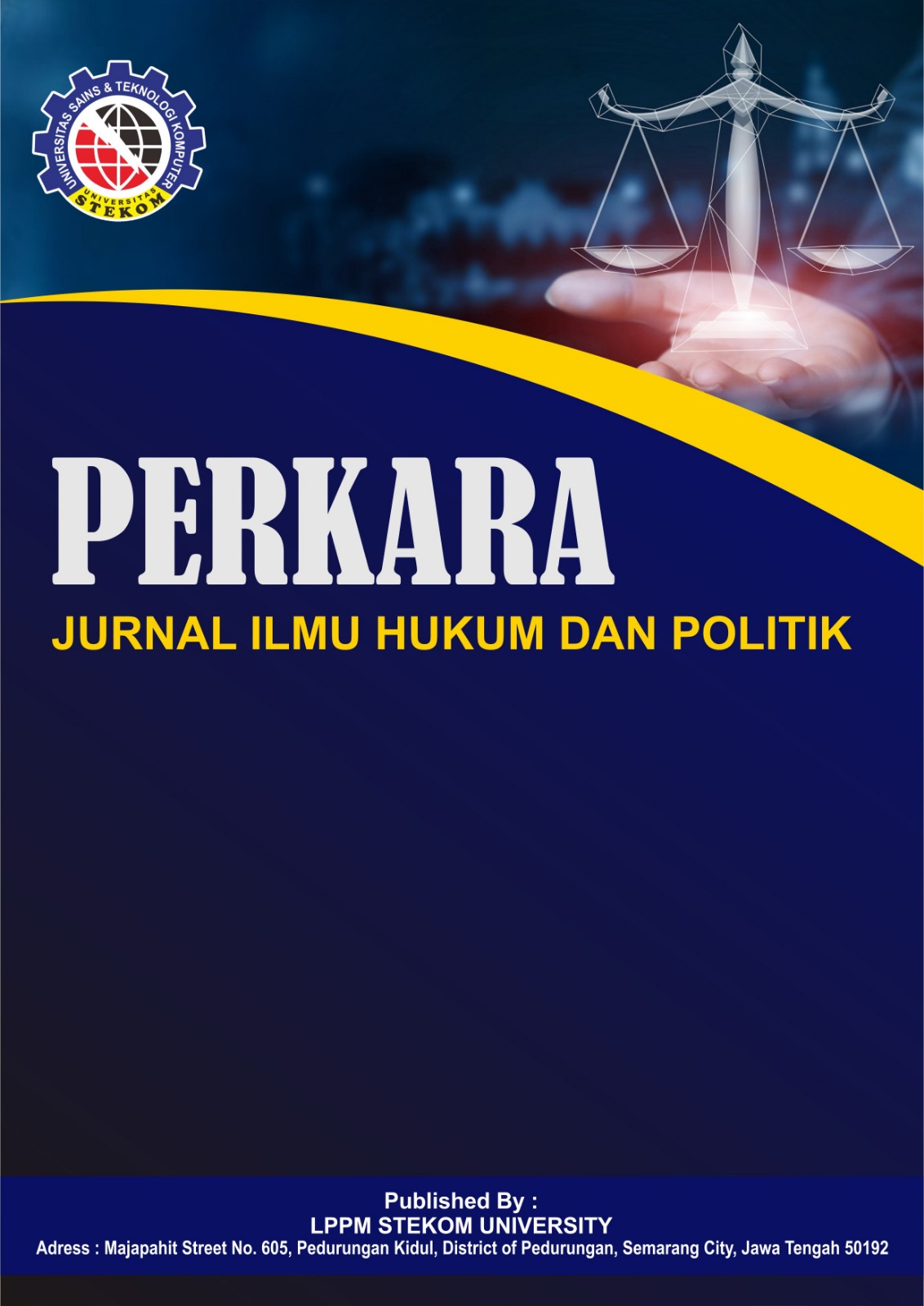Harmonizing Data Privacy Frameworks in Artificial Intelligence: Comparative Insights from Asia and Europe
DOI:
https://doi.org/10.51903/perkara.v2i4.2229Keywords:
Artificial Intelligence, Data Privacy, GDPR, APPI, PIPLAbstract
The rapid adoption of artificial intelligence (AI) has significantly transformed various sectors, such as healthcare, finance, and transportation. However, it also raises critical challenges regarding data privacy, particularly in large-scale data collection and processing. This study explores the differences and similarities in data privacy regulations governing AI between Europe and Asia, focusing on the General Data Protection Regulation (GDPR) in Europe and various regulations such as the Act on the Protection of Personal Information (APPI) in Japan and the Personal Information Protection Law (PIPL) in China. Using a qualitative approach with comparative legal analysis, this research evaluates the principles, flexibility, and practical implications of these regulations for fostering responsible AI development. The findings reveal that while GDPR emphasizes individual protection through transparency and explicit consent, Asia adopts a more flexible approach tailored to national needs, balancing innovation and privacy. However, challenges such as harmonizing cross-border data policies and adapting regulations to rapidly evolving technologies persist. This study contributes to the discourse by highlighting the implications of these regulatory differences for global cooperation and offering strategic recommendations for policymakers and industries. In a globalized digital landscape, aligning legal frameworks is essential not only to protect individual rights but also to build public trust in emerging AI technologies.
References
Akoh Atadoga, Oluwatoyin Ajoke Farayola, Benjamin Samson Ayinla, Olukunle Oladipupo Amoo, Temitayo Oluwaseun Abrahams, & Femi Osasona. (2024). a Comparative Review of Data Encryption Methods in the Usa and Europe. Computer Science & IT Research Journal, 5(2), 447–460. https://doi.org/10.51594/csitrj.v5i2.815
Alamillos, R. R., & de Mariz, F. (2022). How Can European Regulation on ESG Impact Business Globally? Journal of Risk and Financial Management, 15(7). https://doi.org/10.3390/jrfm15070291
Aloisi, A., & De Stefano, V. (2023). Between Risk Mitigation and Labour Rights Enforcement: Assessing the Transatlantic Race to Govern AI-Driven Decision-Making through a Comparative Lens. SSRN Electronic Journal. https://doi.org/10.2139/ssrn.4337517
Calzada, I. (2022). Citizens’ Data Privacy in China: The State of the Art of the Personal Information Protection Law (PIPL). Smart Cities, 5(3), 1129–1150. https://doi.org/10.3390/smartcities5030057
Camacho, N. G. (2024). The Role of AI in Cybersecurity: Addressing Threats in the Digital Age. Journal of Artificial Intelligence General Science (JAIGS) ISSN:3006-4023, 3(1), 143–154. https://doi.org/10.60087/jaigs.v3i1.75
Cervi, G. V. (2022). Why and How Does the EU Rule Global Digital Policy: an Empirical Analysis of EU Regulatory Influence in Data Protection Laws. Digital Society, 1(2). https://doi.org/10.1007/s44206-022-00005-3
Chen, M. (2024). Developing China’s Approaches to Regulate Cross-border Data Transfer:Relaxation and Integration. Computer Law and Security Review, 54. https://doi.org/10.1016/j.clsr.2024.105997
Díaz-Rodríguez, N., Del Ser, J., Coeckelbergh, M., López de Prado, M., Herrera-Viedma, E., & Herrera, F. (2023). Connecting the dots in trustworthy Artificial Intelligence: From AI principles, ethics, and key requirements to responsible AI systems and regulation. Information Fusion, 99. https://doi.org/10.1016/j.inffus.2023.101896
Habbal, A., Ali, M. K., & Abuzaraida, M. A. (2024). Artificial Intelligence Trust, Risk and Security Management (AI TRiSM): Frameworks, applications, challenges and future research directions. Expert Systems with Applications, 240. https://doi.org/10.1016/j.eswa.2023.122442
Hine, E., & Floridi, L. (2022). Artificial Intelligence with American Values and Chinese Characteristics: A Comparative Analysis of American and Chinese Governmental AI Policies. SSRN Electronic Journal. https://doi.org/10.2139/ssrn.4006332
Kim, D. H., & Park, D. H. (2024). Automated decision-making in South Korea: a critical review of the revised Personal Information Protection Act. Humanities and Social Sciences Communications, 11(1). https://doi.org/10.1057/s41599-024-03470-y
Kopalle, P. K., Gangwar, M., Kaplan, A., Ramachandran, D., Reinartz, W., & Rindfleisch, A. (2022). Examining artificial intelligence (AI) technologies in marketing via a global lens: Current trends and future research opportunities. International Journal of Research in Marketing, 39(2), 522–540. https://doi.org/10.1016/j.ijresmar.2021.11.002
Kuzio, J., Ahmadi, M., Kim, K. C., Migaud, M. R., Wang, Y. F., & Bullock, J. (2022). Building better global data governance. Data and Policy, 4(4). https://doi.org/10.1017/dap.2022.17
Liu, Y. li, Huang, L., Yan, W., Wang, X., & Zhang, R. (2022). Privacy in AI and the IoT: The privacy concerns of smart speaker users and the Personal Information Protection Law in China. Telecommunications Policy, 46(7). https://doi.org/10.1016/j.telpol.2022.102334
Mikalef, P., Conboy, K., Lundström, J. E., & Popovič, A. (2022). Thinking responsibly about responsible AI and ‘the dark side’ of AI. European Journal of Information Systems, 31(3), 257–268. https://doi.org/10.1080/0960085X.2022.2026621
Mladinić, A., Vukić, Z., & Rončević, A. (2023). Gdpr Compliance Challenges in Croatian Micro, Small and Medium Sized Enterprises. Pravni Vjesnik, 39(3–4), 53–75. https://doi.org/10.25234/pv/23972
Mukhamediev, R. I., Popova, Y., Kuchin, Y., Zaitseva, E., Kalimoldayev, A., Symagulov, A., Levashenko, V., Abdoldina, F., Gopejenko, V., Yakunin, K., Muhamedijeva, E., & Yelis, M. (2022). Review of Artificial Intelligence and Machine Learning Technologies: Classification, Restrictions, Opportunities and Challenges. Mathematics, 10(15). https://doi.org/10.3390/math10152552
Okuno, M. J., & Okuno, H. G. (2024). Risk Management for Artificial General Intelligence by Limited Liability Companies. Lecture Notes in Networks and Systems, 833, 13–26. https://doi.org/10.1007/978-981-99-8346-9_2
Olukoya, O. (2022). Assessing frameworks for eliciting privacy & security requirements from laws and regulations. Computers and Security, 117. https://doi.org/10.1016/j.cose.2022.102697
Paul, R. (2023). European artificial intelligence “trusted throughout the world”: Risk-based regulation and the fashioning of a competitive common AI market. Regulation and Governance. https://doi.org/10.1111/rego.12563
Raja, N. B., Dunne, E. M., Matiwane, A., Khan, T. M., Nätscher, P. S., Ghilardi, A. M., & Chattopadhyay, D. (2022). Colonial history and global economics distort our understanding of deep-time biodiversity. Nature Ecology and Evolution, 6(2), 145–154. https://doi.org/10.1038/s41559-021-01608-8
Reis, O., Eneh, N. E., Ehimuan, B., Anyanwu, A., Olorunsogo, T., & Abrahams, T. O. (2024). Privacy law challenges in the digital age: a global review of legislation and enforcement. International Journal of Applied Research in Social Sciences, 6(1), 73–88.
Schmitt, M. (2023). Securing the digital world: Protecting smart infrastructures and digital industries with artificial intelligence (AI)-enabled malware and intrusion detection. Journal of Industrial Information Integration, 36. https://doi.org/10.1016/j.jii.2023.100520
Stepenko, V., Dreval, L., Chernov, S., & Shestak, V. (2022). EU Personal Data Protection Standards and Regulatory Framework. Journal of Applied Security Research, 17(2), 190–207. https://doi.org/10.1080/19361610.2020.1868928
Vatter, J., Mayer, R., & Jacobsen, H. A. (2023). The Evolution of Distributed Systems for Graph Neural Networks and Their Origin in Graph Processing and Deep Learning: A Survey. ACM Computing Surveys, 56(1). https://doi.org/10.1145/3597428
Wang, C., Zhang, J., Lassi, N., & Zhang, X. (2022). Privacy Protection in Using Artificial Intelligence for Healthcare: Chinese Regulation in Comparative Perspective. Healthcare (Switzerland), 10(10). https://doi.org/10.3390/healthcare10101878
Wang, S., Jiang, X., & Khaskheli, M. B. (2024). The Role of Technology in the Digital Economy’s Sustainable Development of Hainan Free Trade Port and Genetic Testing: Cloud Computing and Digital Law. Sustainability (Switzerland), 16(14). https://doi.org/10.3390/su16146025
Yun, H. (2024). China’s Data Sovereignty and Security: Implications for Global Digital Borders and Governance. Chinese Political Science Review. https://doi.org/10.1007/s41111-024-00269-9
Zhang, C. (2024). China’s privacy protection strategy and its geopolitical implications. Asian Review of Political Economy, 3(1). https://doi.org/10.1007/s44216-024-00028-2
Zhao, S., Teng, L., Arkorful, V. E., & Hu, H. (2023). Impacts of digital government on regional eco-innovation: Moderating role of dual environmental regulations. Technological Forecasting and Social Change, 196. https://doi.org/10.1016/j.techfore.2023.122842











4.png)
